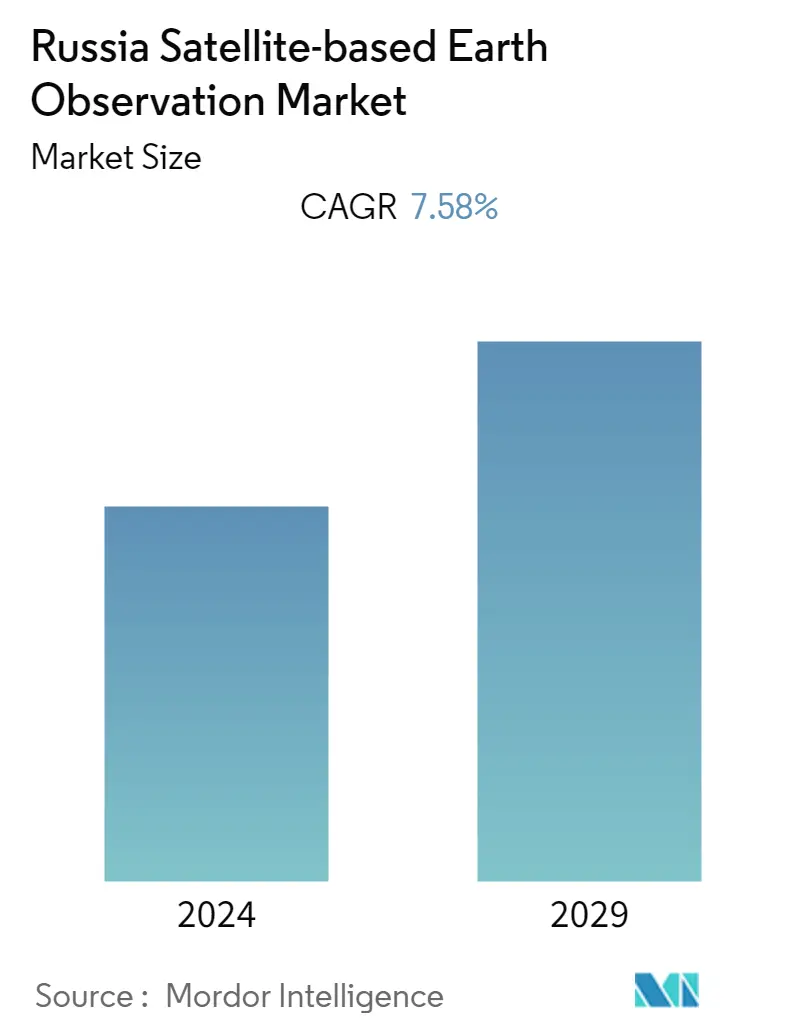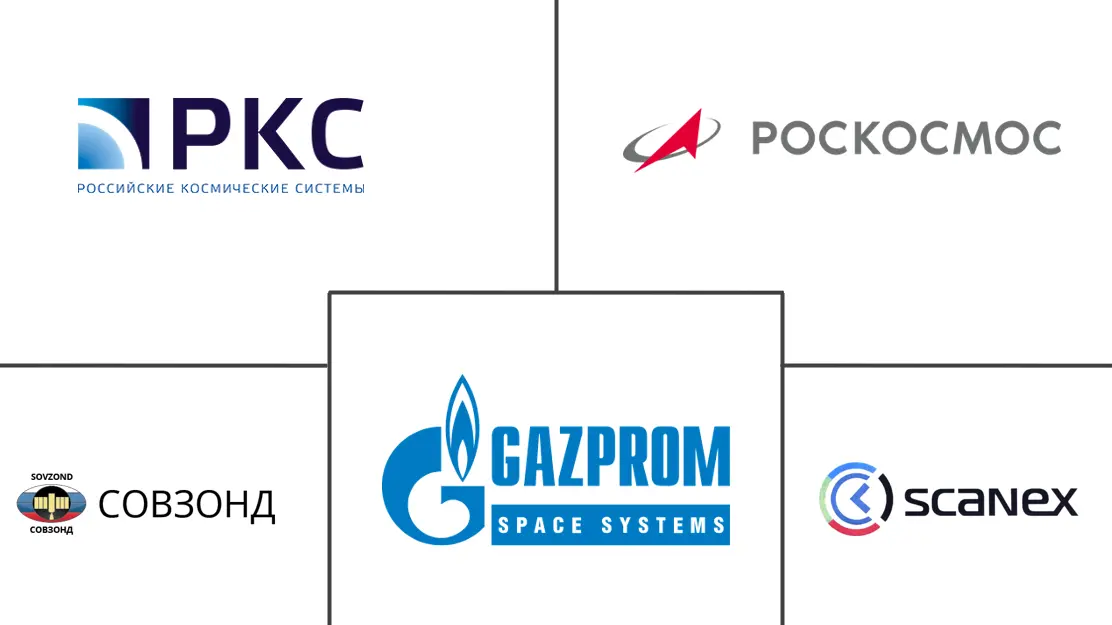Market Size of Russia Satellite-based Earth Observation Industry

| Study Period | 2019 - 2029 |
| Base Year For Estimation | 2023 |
| Forecast Data Period | 2024 - 2029 |
| Historical Data Period | 2019 - 2022 |
| CAGR | 7.58 % |
| Market Concentration | Medium |
Major Players
*Disclaimer: Major Players sorted in no particular order |
Need a report that reflects how COVID-19 has impacted this market and its growth?
Russia Satellite-based Earth Observation Market Analysis
Russia satellite-based earth observation market is valued at USD 0.52 billion in the current year and is expected to register a CAGR of 7.58% during the forecast period to reach USD 0.75 billion by the next five years.
- Satellite-based Earth observation plays a crucial role in national security and defense activities. Russia's need for advanced surveillance capabilities and situational awareness will likely drive demand for satellite imagery and data.
- Russia's satellite-based Earth observation market refers to the industry involved in developing, operating, and utilizing satellite systems and services for observing and collecting data about the Earth's surface and atmosphere. It encompasses satellite imagery, remote sensing, and geospatial data applications for various sectors, including urban development and cultural heritage, agriculture, environment, and infrastructure.
- Russia has a long history and significant expertise in space technology and satellite-based Earth observation. The country operates a constellation of satellites designed for different purposes, including remote sensing, meteorology, and scientific research. A mix of government initiatives, commercial services, and collaborations with international partners characterizes the market.
- In addition, the Russian government has been actively promoting the development of the space industry, including satellite-based Earth observation. Government initiatives, policies, and funding support drive the market's growth. This includes investments in satellite systems, infrastructure development, and research and development activities.
- Further, Russia's vast territory and diverse ecosystems necessitate continuous environmental monitoring and resource management. Satellite-based Earth observation provides valuable data for monitoring deforestation, climate change impacts, natural disasters, and managing natural resources such as oil, gas, minerals, and water reserves. The market's growth is driven by the increasing focus on sustainable development and the need for efficient resource management.
- However, limited funding and budgetary constraints can impede the development and deployment of satellite-based Earth observation systems. The high costs associated with satellite manufacturing, launch, and operations pose challenges for government agencies and commercial entities. Insufficient financial resources can restrict acquiring advanced satellite systems, infrastructure development, and research and development activities.
- Further, COVID-19 has significantly impacted the Russian satellite communications market. The economic impact of the pandemic has led to budgetary constraints and reduced funding availability for satellite-based Earth observation projects. Government agencies and organizations may have faced challenges in allocating resources for satellite programs due to the need to prioritize healthcare and pandemic response initiatives. This may have resulted in delays or scaled-back projects within the market.
